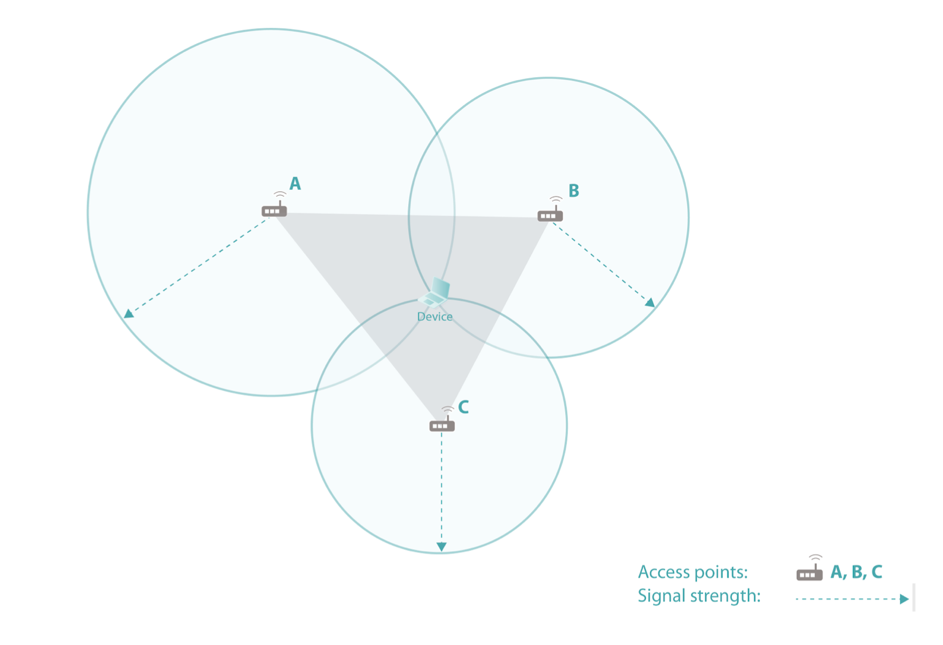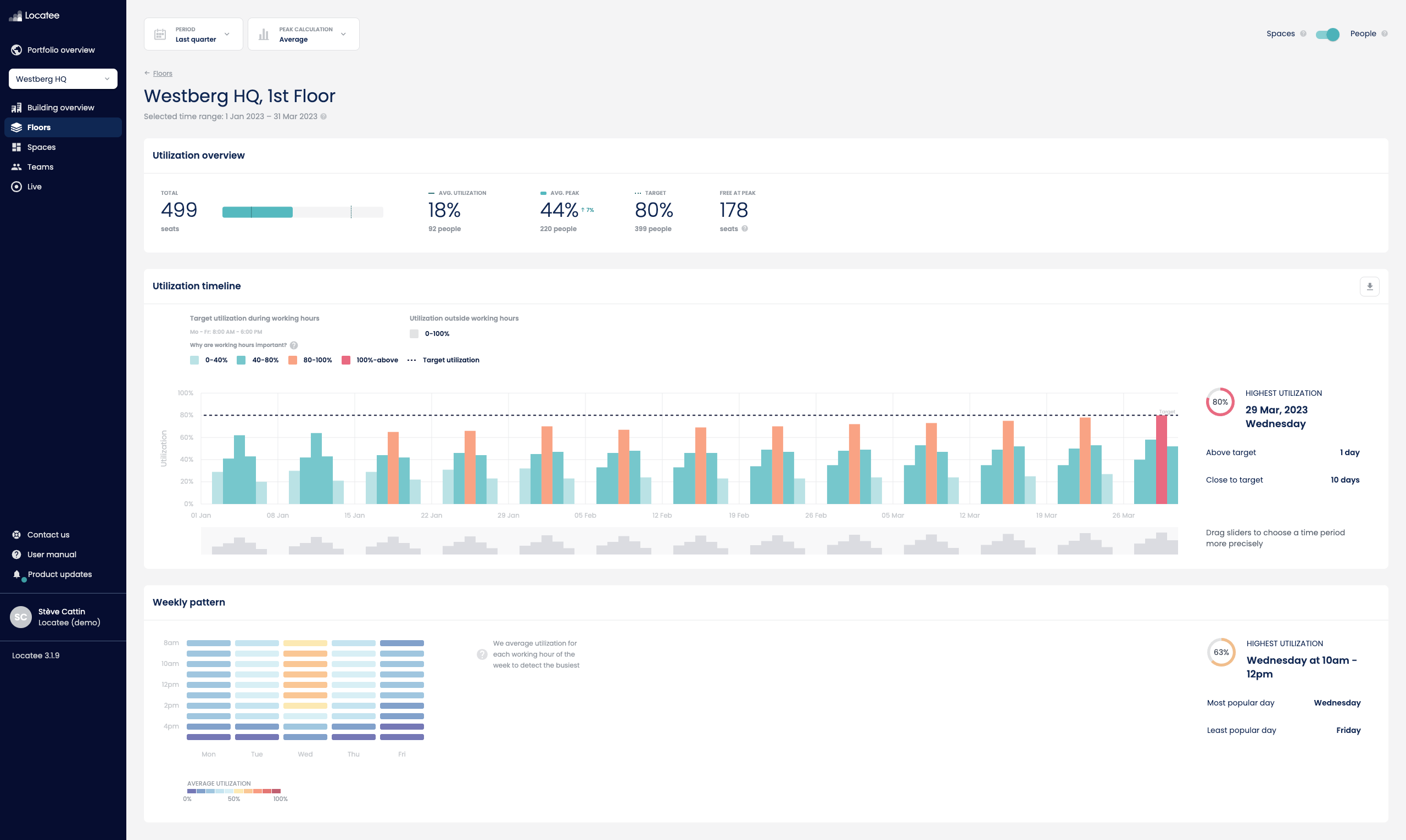Why measure workplace occupancy?
Companies today feel the increasing squeeze to track how much they spend, and the objective of reducing and streamlining operating costs have become a Sisyphus-like struggle of neverending optimization. Apart from pecuniary pressures, another reason for finding the best technologies for measuring workplace occupancy stems from leaders and managers seeking to understand their workforce in the greater mission to create a better future of work.
It should come as no surprise, then, that some of the largest investments made by organizations today are in the realm of office space. However, creating an optimal, effective, and ultimately smarter workplace requires more than thoughtfully designed form and function. It requires information and data. Enter workplace analytics solutions.
Albeit still somewhat of a niche topic, critical discussions surrounding workplace analytics solutions are gaining a fast foothold in the to-dos of Corporate Real Estate Managers and Workplace Experience Directors. Although measuring working patterns to determine space requirements and needs for offices is becoming an imperative, the flexibility and mobility of today’s workforce present a formidable challenge to obtaining reliable data.
This guide will help you navigate your complex smart building landscape
The decision fatigue of seeking a solution
Traditionally, companies have relied on manual counting and surveys to measure the utilization of a workplace. A tactic not only prone to human error, but also incredibly time-intensive and unfit for scaling across large corporate real estate portfolios. Furthermore, manual studies do not satisfy demands for continuous data. Instead, they only reflect information gathered from a single point in time.
More recently, reliance on technology, namely motion sensors, LAN and Wi-Fi, and room booking systems are changing the way workplace occupancy data is collected—used. But the availability of so many options coupled with a lack of general information leads to much confusion around the topic of choosing a method to go with. Are motion sensors and Wi-Fi used to measure the same thing? Is using Wi-Fi better than using LAN? What data is actually being measured? Which method is best? Answering these questions requires a better understanding of how each measurement technology works.
Technologies for measuring workplace occupancy and how they work
The section below provides brief explanations on each of the technologies used to measure workplace occupancy. An important thing to keep in mind is that while technologies like LAN and Wi-Fi measure data using devices, sensors and room booking systems collect data by counting occupants. Keeping this distinction in mind will help decide the most suitable solution later on.
LAN (Local Area Network)
Measurement data from LAN is collected whenever a device is connected to a network using a physical cable or docking station. Because LAN requires a literal connection, the technology offers quite precise measurements, as it is easy to determine the whereabouts of a cable or a docking station. A downside of using LAN as a workplace occupancy measurement method, consequently, is that it requires a physical connection to the IT infrastructure. This is not always an option in modern offices with spaces designed for activity-based working.
Wi-Fi
In the case of Wi-Fi, the signal strength of wireless access points are used to determine a device’s location in a process known as trilateration. A minimum of three access points are required to perform a trilateration to determine the location of a wireless device.
 The level of precision offered by Wi-Fi solutions depends greatly on access pointplacement and density. A Wi-Fi setup with high access density will provide more granular insight than a Wi-Fi setup with low access density, as more signals are used to deduce a more accurate coordinate.
The level of precision offered by Wi-Fi solutions depends greatly on access pointplacement and density. A Wi-Fi setup with high access density will provide more granular insight than a Wi-Fi setup with low access density, as more signals are used to deduce a more accurate coordinate.
Sensors
Sensor technology is probably the most straightforward and easiest technology to understand. Mounted on various locations throughout a building, sensors are used to measure noise levels, temperature, air quality, and employee presence. While they provide precise and granular level of data, the main drawback of sensors is their costly setup, maintenance, and difficulty to roll out across a large real estate portfolio.
Room Booking System
Room booking systems cannot be considered a method for measuring workplace occupancy and utilization on their own. But they can provide invaluable insight into how meeting rooms are used when they are integrated with other measurement methods. By accessing calendar data, room booking systems reveal the number of people in a meeting room at a given time, how long a room was used for, and even how many people declined a meeting but were originally expected to attend.
Learn more about each different measurement method here >
Determining the need and use case
When weighing different workplace utilization measurement options, the most important thing to keep in mind is what will be measured and to whom the analytics may be of value.
For example:
- A CFO who oversees the company’s finances and corporate real estate strategy may primarily be interested in comparing the overall performance of different buildings in his or her real estate portfolio.
- A Real Estate Manager may want to find out more detailed information on the usage and foot traffic in a certain lounge, meeting room, or floor.
- A Director of Workplace Experience may be looking for detailed information on the individual utilization of desks, phone booths, or seats in a meeting room.
In all the above scenarios, the knowledge workers are looking for a “workplace analytics solution”, but the scopes of their needs are entirely different.
Looking at the use case for each individual, it’s clear that the CFO is looking for a workplace analytics solution which provides data on a building level. Although having additional information on floor- and desk-level workplace utilization is nice to have, it is not a business-critical need. On the other hand, neither the Real Estate Manager nor the Director of Workplace Experience will be satisfied with a bird’s-eye overview. They require more granular data. The Granularity Overview below visualises the level of precision and insight each measurement technology is able to provide.
 Source: Granularity Overview and Recommendations from Locatee
Source: Granularity Overview and Recommendations from Locatee
What is the best practice for you?
Taking the information into account, we begin to form a better picture of who needs which technologies for measuring workplace occupancy.
- The CFO who wants to compare overall building utilization across his or her portfolio can most easily do so using the enterprise LAN or Wi-Fi
- The Real Estate Manager who wants to measure utilization in large areas across floors can also do so using enterprise LAN or Wi-Fi, although he or she would need to integrate a sensor solution in meeting rooms in order to measure their utilization.
- The Director of Workplace Experience who is looking for desk-, phone booth-, and seat-level occupancy data must rely on the help of sensors, as LAN and Wi-Fi measurement methods are not able to provide such precise measurements on a small scale. Additionally, he or she might want to consider integrating data from a room booking system to analyse the usage of meeting rooms.
When it comes to choosing technologies for measuring workplace occupancy, each solution offers its own advantages (and drawbacks). The real key to choosing the best solution is to understand the business need and then selecting the most appropriate technology.
Do you want to figure out which technology suits you best?

 5’
5’




